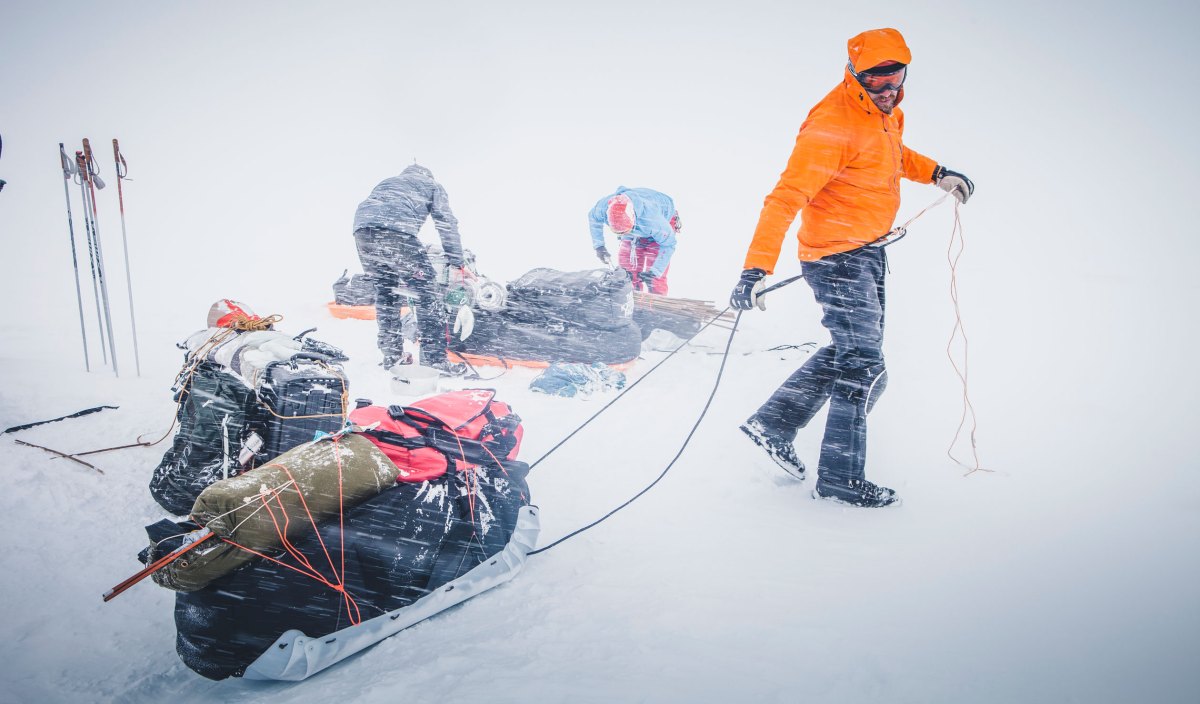Film Festival review: Into the Ice
A Danish documentary filmmaker follows three glaciologists into one of the most extreme environments on Earth, seeking to discover how fast the Greenland icesheet is melting. The resulting film is as sobering as it is exquisite.


A still from the documentary 'Into the Ice' showing pioneering glaciologist Alun Hubbard on his way into a giant glacier in Greenland. Photo: Lars H Ostenfeld
Into the Ice opens with a breathtaking aerial view of Greenland’s vast icesheet, black ice threaded with sapphire rivers of meltwater. This dark ice is ancient, formed before the last Ice Age more than 11,500 years ago.
Climate experts agree that Greenland’s icesheet functions like a global thermometer: the rate and scale at which this icy wilderness is disappearing signposts the speed and severity of climate upheaval for the rest of the planet. Yet, despite years of research, there is still no definitive answer to the question of how swiftly this icesheet is melting.
Filmmaker Lars Henrik Ostenfeld follows three world-leading glaciologists into the field to get to the bottom of this question – quite literally, when one of the scientists descends further than any human has ventured before to reach the base of the ice sheet.
Accompanying American glaciologist Jason Box as he treks across the icesheet on foot, Ostenfeld witnesses the danger of gathering field data in one of the most extreme landscapes on the planet. Camping on the ice, Box investigates changes to the depth of snowfall and the impact of increasing rainfall on ice melt in a warming world.

Lars Ostenfeld accompanies glaciologist Jason Box as he treks across the icesheet.
Visiting the facilities of world-renowned Danish physicist and glaciologist Dorthe Dahl-Jensen, Ostenfeld is shown her ice-core research, shedding new light on the movement of ice due to streams deep in the sheet. These ice-streams ultimately push large icebergs into the sea – a process responsible for half of the ice mass that has been lost from the vast sheet.
And finally, Ostenfeld returns to the landscape with which he opened this visually stunning documentary – the vast icesheet veined with glowing streams of meltwater, punctuated with dark, gaping holes that vanish into the depths of the ice.
Accompanying British glaciologist Alun Hubbard, the filmmaker descends deep into the ice by entering a moulin – one of the cavernous holes formed when meltwater gouges great rivers and fissures in the ice sheet. As much adventurer as expert glaciologist, Hubbard’s exploration of the depths of the icesheet reveals that rising temperatures are not the only cause of ice melt. Late summer rain seeping into the icesheet is failing to freeze and lubricating the icesheet’s slide towards the ocean, accelerating the process of loss.
Pairing heart-in-the-mouth visuals with sobering data, this cinematic documentary strips away any complacency about the climate crisis. Climate change is accelerating. And if the data from the Greenland ice-sheet tells the world anything, it is that we are witnessing a disaster in slow-motion.
As climatologist Jason Box says: “Once you see what is happening here, you feel the burden of knowledge. It makes it hard to sleep at night.”
Into the Ice is being presented as part of the 2022 Adelaide Film Festival and will screen again on Thursday, October 27, at Palace Nova Eastend Cinema.
Read more Film Festival stories and reviews here.




